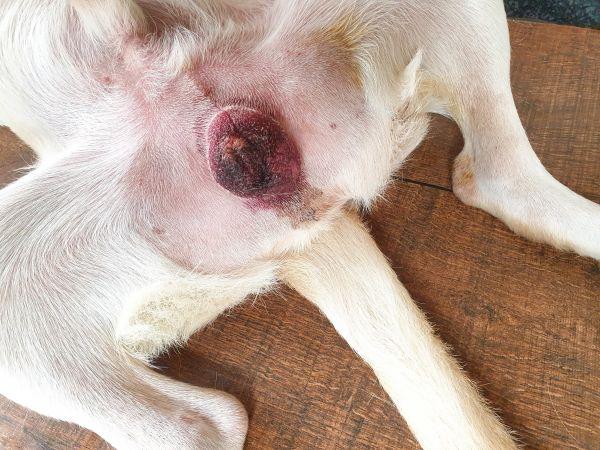Neutered Male Dog Marking in the House: Understanding the Unwanted Behavior
In the world of dog ownership, few things can be as perplexing as returning home to find that your once-great companion has left a tantalizing trail of scents throughout your living space. Particularly with neutered male dogs, this behavior can feel like an unexpected plot twist in an otherwise smooth narrative. While many owners believe that neutering will eliminate the urge to mark territory, the reality is far more nuanced. This article dives into the intriguing psychology and biology behind neutered male dogs marking indoors, dispelling myths and offering insights into why this behavior persists. By understanding the reasons behind this puzzling phenomenon, dog owners can take meaningful steps towards creating a harmonious home for both their four-legged friends and themselves.
Table of Contents
- Understanding the Causes of Neutered Male Dog Marking Behavior
- Effective Strategies for Preventing Indoor Marking in Dogs
- Training Techniques to Redirect Inappropriate Marking Habits
- Creating a Comfortable Environment for Your Neutered Male Dog
- Q&A
- Future Outlook
Understanding the Causes of Neutered Male Dog Marking Behavior
Understanding the reasons behind marking behavior in neutered male dogs can be complex. While neutering significantly reduces hormone-driven behaviors, it doesn’t entirely eliminate them. Triggers for marking can stem from a variety of sources, including:
- Stress and Anxiety: Just like humans, dogs can exhibit marking as a response to stress or changes in their environment.
- Territorial Instincts: Dogs are naturally territorial, and even neutered males may feel the need to assert their presence in familiar spaces.
- Changes in Household Dynamics: New pets, visitors, or changes in routine can provoke a need to mark territory.
- Medical Conditions: Certain health issues may cause increased urination, leading to unintentional marking.
To manage and mitigate this behavior, it’s essential to consider individual differences among dogs. Training and behavioral adjustment techniques can play a crucial role. A few effective strategies are:
- Positive Reinforcement: Reward desired behaviors to encourage alternative responses.
- Consistent Routine: Establishing daily schedules can provide structure, reducing anxiety.
- Thorough Cleaning: Removing the scent of previous markings helps deter repeated behavior.
Effective Strategies for Preventing Indoor Marking in Dogs
To curb indoor marking in neutered male dogs, it’s essential to create a consistent and stimulating environment. Establish a routine that includes regular outdoor potty breaks, as this helps reinforce good bathroom habits. Additionally, make your home a less enticing place for marking by ensuring your dog has sufficient exercise and engagement. This can be achieved through:
- Daily walks to expend energy
- Interactive toys that challenge their minds
- Training sessions that strengthen your bond
Monitoring your dog’s behavior is crucial. Consider the triggers that may lead to marking, such as new visitors or changes in the environment. Training your dog with positive reinforcement techniques can discourage unwanted marking behaviors. Implementing the following strategies can foster a more harmonious living situation:
| Strategy | Description |
|---|---|
| Identify Triggers | Observe when and where marking occurs to address specific situations. |
| Use Deterrents | Apply sprays or physical barriers in marking-prone areas. |
| Redirect Attention | Distract them during triggers with commands or toys. |
Training Techniques to Redirect Inappropriate Marking Habits
To effectively combat marking behaviors in neutered male dogs, implementing a variety of training techniques can significantly alter their habits. It’s crucial to establish a strong foundation of consistent house rules. Whenever you spot your dog attempting to mark, intervene calmly but firmly. Redirect your dog to a more appropriate behavior, such as using an outdoor space for relieving themselves. Positive reinforcement is key; reward them immediately after they do their business outside. This not only pins the desired behavior in their minds but also strengthens their bond with you through praise and treats.
In addition to redirection, incorporating basic obedience training can reinforce proper behaviors. Teaching your dog commands such as “leave it” or “no” can be invaluable. Here are some specific strategies that can be employed:
| Technique | Description |
|---|---|
| Frequent Potty Breaks | Increase the frequency of outdoor potty breaks to reduce indoor marking opportunities. |
| Consistent Routine | Establish a reliable schedule for feeding and bathroom breaks. |
| Limit Access | Restrict areas where marking is occurring using gates or barriers. |
| Scent Deterrents | Use pet-safe sprays to discourage marking in problem areas. |
Combining these approaches establishes a comprehensive strategy that not only mitigates marking but also creates an environment of understanding and trust. Remember, patience and consistency are your best allies in this process, enabling your dog to understand what is acceptable in your shared space.
Creating a Comfortable Environment for Your Neutered Male Dog
Creating a soothing space for your neutered male dog can significantly reduce any unwanted marking behaviors. Start by ensuring his environment is free from stressors that may trigger the urge to mark. Key strategies include:
- Providing a comfy bed in a quiet corner where he feels secure
- Using calming pheromone diffusers or sprays to promote relaxation
- Establishing a consistent routine for feeding and bathroom breaks
- Avoiding exposure to overly stimulating situations, including loud noises or aggressive interactions
In addition to a relaxing atmosphere, consider maintaining cleanliness to deter marking in specific areas. Regularly clean any spots where marking has occurred, using enzymatic cleaners that break down odor-causing compounds. Incorporate the following practices into your routine:
| Cleaning Tips | Frequency |
|---|---|
| Spot clean marked areas immediately | As needed |
| Deep clean carpets and upholstery | Monthly |
| Wash dog bedding and toys | Weekly |
By fostering a calm and pristine environment, you empower your neutered male dog to feel at ease, which may help reduce the instinct to mark in the house.
Q&A
Q&A: Understanding Neutered Male Dog Marking in the House
Q1: Why do some neutered male dogs continue to mark their territory indoors?
A1: Neutering can reduce certain behaviors, but it doesn’t eliminate them entirely. Marking is often driven by instinct, social signaling, or insecurity rather than a purely hormonal response. Your dog might still feel the need to claim their space or respond to environmental triggers, like the scent of other animals, even after being neutered.
Q2: Are there specific breeds or personalities that are more prone to marking despite being neutered?
A2: Yes, some breeds are naturally more territorial or dominant, which can make them more likely to mark regardless of their neuter status. Additionally, dogs with anxious personalities or those lacking confidence may mark more often as a coping mechanism. It’s essential to consider individual temperament in conjunction with breed tendencies.
Q3: What can I do if my neutered male dog is marking inside the house?
A3: Start by identifying potential triggers. Clean all marked areas thoroughly with an enzymatic cleaner to eliminate scents that may encourage repeated marking. Consider increasing bathroom breaks outside, providing more mental stimulation, and addressing any anxiety your dog might be feeling. If the problem persists, consulting a veterinarian or a professional dog trainer can provide personalized strategies.
Q4: Is marking the same as urination, or are they different behaviors?
A4: While both involve urination, they serve different purposes. Marking is typically characterized by a small amount of urine deposited in a specific spot, often done in a vertical position. It’s a way for dogs to signal their presence and establish their territory, whereas regular urination usually involves a more significant release and is tied to the dog’s needs to relieve themselves.
Q5: Could there be medical reasons for my neutered male dog marking in the house?
A5: Yes, there are medical issues that might cause a dog to mark. Conditions such as urinary tract infections, bladder issues, or other health problems can lead to increased urination or behavioral changes. If marking is sudden or accompanied by other concerning symptoms, it’s wise to consult your veterinarian for a thorough evaluation.
Q6: Can training help reduce marking behavior in neutered male dogs?
A6: Absolutely! Consistent training techniques, such as positive reinforcement for eliminating outside, can help reprogram your dog’s habits. Teach commands like ”leave it” or “no” to redirect marking attempts. Creating a structured routine will also help fortify desired behaviors. Remember, patience is key, as changing established habits takes time.
Q7: How can I provide my dog with a sense of security to minimize marking?
A7: Building a sense of security starts with creating a stable environment. This can include establishing a consistent daily routine, providing a safe space for your dog, and offering plenty of exercise to release excess energy. Engaging in interactive playtime and offering mental challenges, like puzzles or training exercises, can also help alleviate anxiety, reducing the urge to mark.
Q8: Should I be worried if my neutered male dog is marking in the house?
A8: While it can be an annoyance, marking itself is usually not a cause for serious concern. It’s important to approach the behavior calmly and systematically. However, if coupled with changes in appetite, energy levels, or other unusual behaviors, it may warrant a closer look by a veterinarian to rule out health issues.
These questions aim to provide insight into a common yet often frustrating behavior for dog owners. Understanding the reasons behind marking and how to address it can foster a better relationship with your furry companion.
Future Outlook
while neutering your male dog often leads to a decrease in marking behaviors, it is not a guaranteed solution for all dogs. Understanding the underlying reasons behind this behavior—whether they stem from stress, territory, or other factors—can significantly aid in addressing the issue. With patience, consistent training, and the right environmental adjustments, you can help your furry friend feel more secure in their home, ultimately making them a happier companion. Remember, every dog is unique, and what works for one may not work for another. So, stay observant and compassionate, and together, you and your dog can find the path to a more peaceful cohabitation. Just as every mark tells a story, so does every step towards a solution—an opportunity for growth in your relationship with your canine companion.



